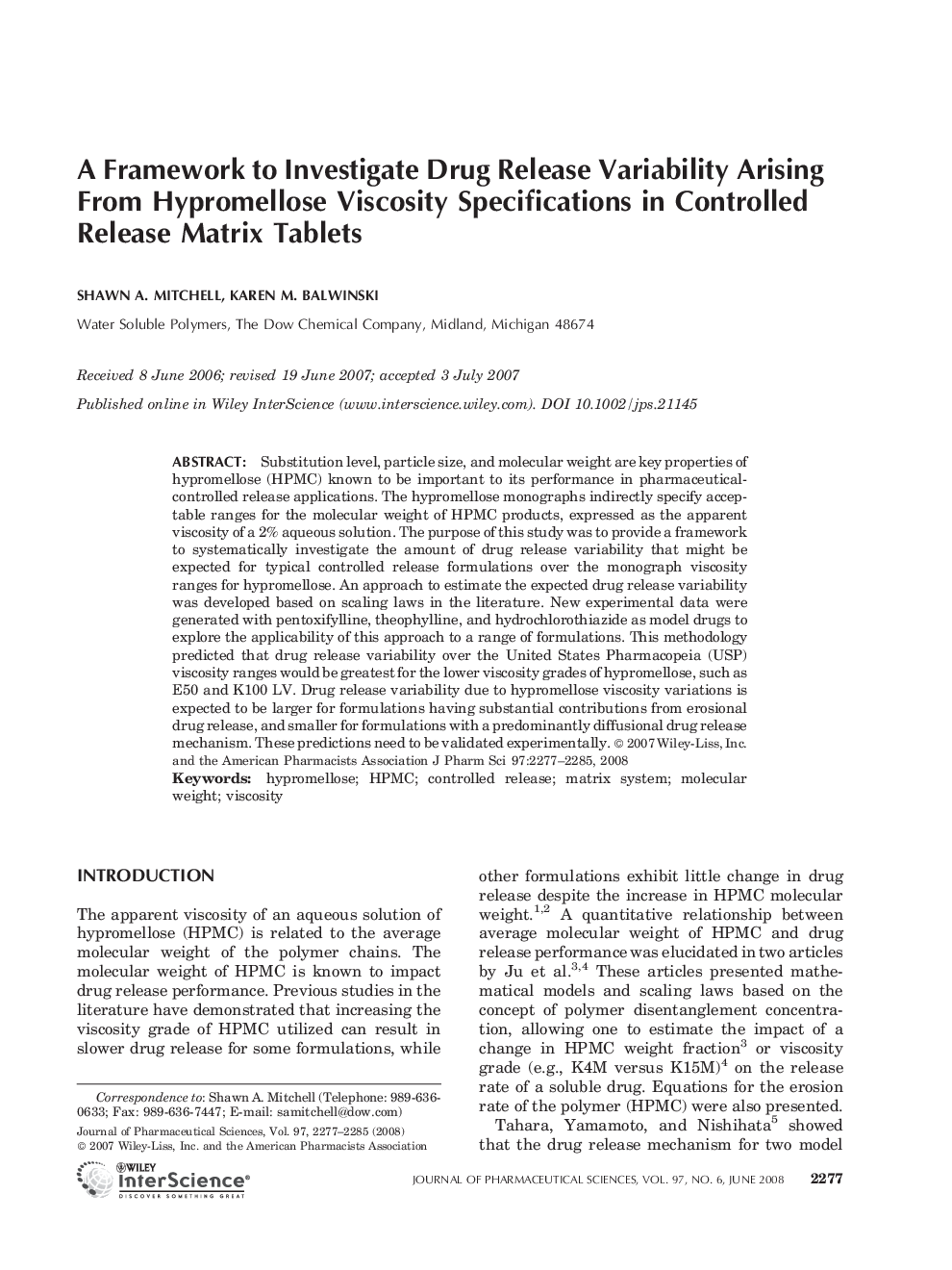| Article ID | Journal | Published Year | Pages | File Type |
|---|---|---|---|---|
| 2486882 | Journal of Pharmaceutical Sciences | 2008 | 9 Pages |
Abstract
Substitution level, particle size, and molecular weight are key properties of hypromellose (HPMC) known to be important to its performance in pharmaceutical-controlled release applications. The hypromellose monographs indirectly specify acceptable ranges for the molecular weight of HPMC products, expressed as the apparent viscosity of a 2% aqueous solution. The purpose of this study was to provide a framework to systematically investigate the amount of drug release variability that might be expected for typical controlled release formulations over the monograph viscosity ranges for hypromellose. An approach to estimate the expected drug release variability was developed based on scaling laws in the literature. New experimental data were generated with pentoxifylline, theophylline, and hydrochlorothiazide as model drugs to explore the applicability of this approach to a range of formulations. This methodology predicted that drug release variability over the United States Pharmacopeia (USP) viscosity ranges would be greatest for the lower viscosity grades of hypromellose, such as E50 and K100 LV. Drug release variability due to hypromellose viscosity variations is expected to be larger for formulations having substantial contributions from erosional drug release, and smaller for formulations with a predominantly diffusional drug release mechanism. These predictions need to be validated experimentally.
Related Topics
Health Sciences
Pharmacology, Toxicology and Pharmaceutical Science
Drug Discovery
Authors
Shawn A. Mitchell, Karen M. Balwinski,
